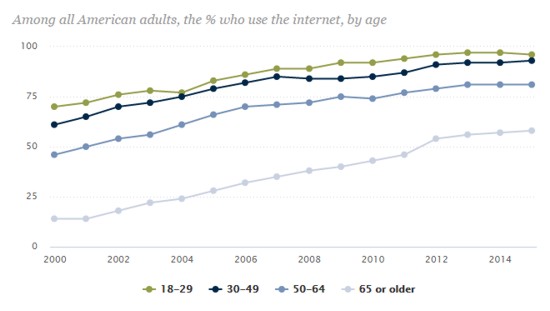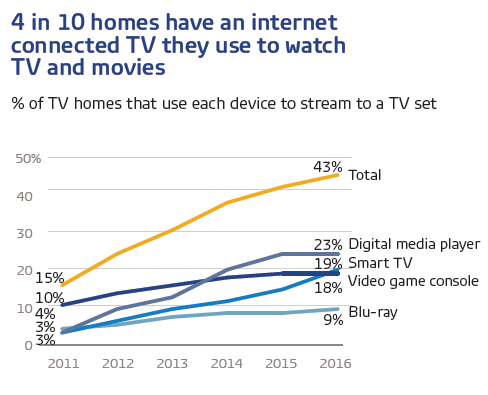Driven Data
Marketing Trends: Digital vs Traditional
I like to spend a few hours a week reading and responding on blogs and forums. Over the last few weeks there is one topic that seems to be coming up on a regular basis that I am intrigued by. There are some that strongly feel that the ways of traditional marketing are dying if not dead already. There is no denying that digital marketing is the trendy winner when placing your advertising bets, but let’s look at some interesting factors to see where we really are today.
Digital
The internet has been one of the most amazing inventions and we continuously figure out new ideas that enhance communication channels. Add in the fact of accessibility at any time and almost wherever you are makes digital marketing the place to lay your money down. One of the arguments for maintaining a healthy traditional ad spend is the fear of excluding a large population. This argument made sense back in the year 2000 when only 52% of American adults used the internet. As you can see from the chart below, the trend amongst all adults has significantly gone up across every age group resulting in 84% of adults using the internet by the year 2015.

According to the graphic, the older the audience, the less they are going to be online. However, the age grouping is static and as our population gets older, this graphic will continue to increase more and more for the older demographic. So if you aren’t focusing a majority of your ad spend on digital, you are severely missing your audience potential. If 84% of the adult audience is using the internet, I would bet you are reaching more digitally than you would be via traditional.
Traditional
Ah, the good ole days! TV, radio, and print. Why are auto dealers still sinking significant dollars into this space? Is it still effective? Sure, but how effective and is it worth the investment? Those are the real questions and real problems to be solved here. We have all seen commercials and heard radio advertisements for local dealerships before. But did you know that your reach in these mediums is closing every year and quickly? Check out the next graphic as it shows how the population is starting to use more and more streaming technologies to watch their programs.

What does this mean for auto dealers and their TV spend? It means that their reach is quickly diminishing because the population is starting to watch ad less programming via web service TV. Sure there are still some web apps that show some ads, but you will be hard pressed to find localized ads for their markets. The same issue exist for radio. More and more people are listening to their music or podcast in ad less environments.
Radio is seeing the same trends as TV. As an example, Spotify has a free option to listen to their music library. There are some limitations to the app but it also comes with ads. Or you could pay the $10 per month for ad free radio. Look at the trend below and you will see that of the 100 million users of Spotify, half of them are now paid subscribers.
If you are reading between the lines here, you will notice that people are looking to be reached on their terms. People will pay for services without ads because they are seen as more of a disruption to the content they want.
I’m not going to say that you should never do any TV or Radio. There are some catchy ads out there and they are effective, but at the current premiums they are still asking to run ads, you better have a great ad agency to deliver that effectiveness. Or you could spend that additional money on your digital marketing strategy where:
-
Your reach is higher than traditional
-
Effectiveness is easier to monitor
-
Accessibility to your ads are not limited to specific time frames of the day
-
Allow people to engage with your ads when they are ready
I find the statistics behind this topic fascinating in regards of the velocity of people dumping traditional TV and Radio options for cheaper, ad free environments.
I’m always looking for a good conversation around this topic, so please feel free to reach out if you would like to discuss further.
A chameleon of sorts with experience in the marketing, product management, SaaS industries, engineering, digital arts, and real estate development. Has consulted with Fortune 500 companies in regards to marketing, product marketing and management, and operations. Currently works for Driven Data, the fully automated one-and-done dashboard for auto dealers.
4 Comments
Ian Barkley
Honda Washakikiki
Thanks for posting
Caleb Twito
Driven Data
I'm not a marketer but it seems that with a targeted approach, I have to believe that digital ads can have a much higher return for the cost compared to big TV campaigns?
David O
Multi-Franchise Dealer
Thanks for the post!
Watch the trend moving towards subscription based TV... As soon as the Netflix, Amazons of the world give a "free with commercial interruptions" version, the game will change.
Dave Wells
Driven Data
Thanks for reading and the feedback David.
While I do agree that a free service would bring back some of that particular audience, but if you look at the trend of people paying for ad free services (Spotify was the example above), more and more people are willing to pay for the premium service to avoid the interruption to their programs. Especially with the velocity of people saving money by cutting cable and paying less than half for the Amazon Primes, Hulus, Sling TV services. Your audience is continuing to trend away from having to experience ads in general. I do think there will be a shift in the way ads are presented to this audience, but what is not known is how much it will cost vs the reach as today most of the ads that I will see while watching Sling TV are national type of brands and not locally based.